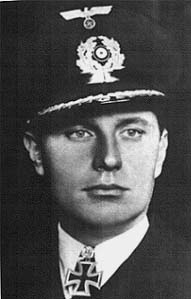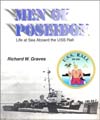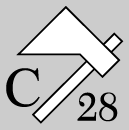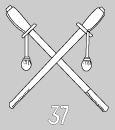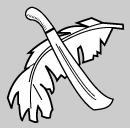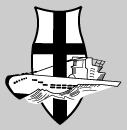Each new intake of officer cadets in the Kriegsmarine (German Navy 1935-1945) was known as "crews". This was normally one such crew a year but closer to the war and esp. during the war the crews became more numerous.
Before the war each crew normally went on an extended training voyage, normally on a large warship. They landed in many countries where they were given much attention as they paraded in some of those same towns before continuing on their patrol.
We hope we can give each crews its own page listing its most famous members, more detailed history and so on.
We only cover the crews that are relevant to the U-boat force of WWII.
Crew 28
The officer cadets need four and half year to reach the first officer rank (Leutnant zur See). 14 U-boat commanders came from this crew.Some of them were Werner Hartenstein (U-156) and Karl Thurmann (U-553).
Crew 29
Some of the 16 U-boat commanders of this crew were Otto Schuhart (U-29), Hans-Ludwig Witt (U-129) and Ernst Hechler (U-870).
Crew 30
Some of the 19 U-boat commanders of this crew were Otto Kretschmer (U-99), Joachim Schepke (U-100), Otto von Bülow (U-404), Adolf Piening (U-155) and Karl-Heinz Moehle (U-123).
Crew 31
Crew 31 left on its patrol in foreign waters on 1 Dec, 1931 on the light cruiser Karlsruhe, they made a stop in Peru among other locations.Some of the 24 U-boat commanders of this crew were Heinrich Lehmann-Willenbrock (U-96), Wilhelm Dommes (U-431), Robert Gysae (U-98) and Fritz-Julius Lemp (U-30).
Crew 32
In a freak weather the training sailing ship Niobe (launched in 1913, commissioned into the German Navy in 1923) sank taking with it 70 victims, 27 cadets from Crew 32 (and 42 of its regular crew plus a civilian). With the loss of almost the entire Crew 32 Admiral Raeder wrote to the largest commercial shipping companies and asked for some of their best officers in replacement (see Crew 33).Some of the U-boat commanders of this crew were Claus Korth (U-93), Peter Erich Cremer (U-333), Rolf Mützelburg (U-203) and Helmut Rosenbaum (U-73).
Crew 33
After the loss of crew 32 some 15 officers from passenger liners and merchant ships joined the Navy, those included Günther Prien and Heinrich Bleichrodt to name a few. Those men were awarded for their prior experience and they were often referred to as Crew 31/33.Some of the 70 U-boat commanders of this crew were Wolfgang Lüth (U-43), Reinhard Hardegen (U-123), Jürgen Oesten (U-861), Erwin Rostin (U-158), Werner Henke (U-515) and Heinrich Timm (U-862).
Crew 34
The crew started with 291 officer cadets.Some of the 82 U-boat commanders of this crew were Erich Topp (U-552), Adalbert Schnee (U-201), Carl Emmermann (U-172), Engelbert Endrass (U-567), Jochen Mohr (U-124) and Friedrich Guggenberger (U-81)
Crew 35
The crew started with 462 officer cadets, from these 351 nautical cadets, 56 technical cadets and some other branches.Some of the 109 U-boat commanders of this crew were Albrecht Brandi (U-617), Georg Lassen (U-160), Reinhard Suhren (U-564) & Harald Gelhaus (U-107).
Crew 36
 This Crew became known as the Olympia crew, they joined in the year of the famous Berlin Olympics and they chose the Olympic rings as their emblem.
This Crew became known as the Olympia crew, they joined in the year of the famous Berlin Olympics and they chose the Olympic rings as their emblem.
The crew has started with 518 officer cadets.
Some of the 133 U-boat commanders of this crew were Hans-Hartwig Trojer (U-221), Klaus Bargsen (U-521) and Otto Ites (U-94).
Crew 37a
Crew 37a, normally it would have been referred to as Crew IV/37, started its training in April. It started with 417 cadets and 115 of them became U-boat officers.The crew emblem was seen on the following boats;
U-152,
U-225,
U-419,
U-472 and
U-539.
Crew 37b
The second Crew of 1937 was known as Crew 37b, normally it would have been named X/37 indicating its start of training in October.The crew has started with 436 officer cadets.
Crew 37 left for its training patrol on the battleships Schlesien and Schleswig Holstein and the light cruiser Emden (having to take the merchant vessel August Schultze to Spain and board her).
Crew 38
The crew started with 626 officer cadets and was called the "Grossdeutschland Crew", but also nicknamed the "Gangster-Crew" for some outstanding pranks on the Naval school Mürwik.Some of the 97 U-boat commanders of this crew were Otto Westphalen (U-968), Heinz Sieder (U-984) and Hans-Joachim Förster (U-480). 161 crewmembers died on U-boats during the war.
Crew X/39
The crew also called the "Kriegs-Crew", started with 633 officer cadets, 78 of which became U-boat commanders. 150 crewmembers died on U-boats.
Crew XII/39
The crew started with 1080 officer cadets, of which 78 became U-boat commanders. The officer cadets need only two years and 4 months to reach the first officer rank.
Crew 40
The crew started with 981 officer cadets, 301 from them joined the U-Boot-Waffe. 25 crewmembers became U-boat commander.
Crew I/41
The crew started with 520 officer cadets, only 5 crewmembers became U-boat commanders, but 122 men died on U-boats.Crew V/41
Crew V/41 started its training in May of 1941 with 882 men. Since most of this crew received a watch officer (WO) training, they choose the U-boat as the emblem.Only 3 officers of this crew became U-boat commanders; Ltnt. Hans-Eckart Augustin (U-62), Ltnt. Kurt Braun (U-763) and Ltnt. Ludwig-Ferdinand von Friedeburg (U-155 & U-4710), so this emblem is not seen on U-boats.
Crew V/41 was the second crew in 1941. More than 200 from this crew members died on U-boats in the war.
Crew X/41
The crew also called the Falkland-Crew has started with 614 naval officer cadets, more than 200 of them served on U-boats. But members of this crew were too young to become U-boat commanders.
Crew VI/42
This was the last Kriegsmarine crew that had U-boat officers in its ranks, also known as the Skagerak-Crew. Its members became officers very late in the war (December 1944).Among its members were the founder of the U-Boot-Archiv, Horst Bredow and the famous historian and author Prof. Dr. Jürgen Rohwer.
The last Kriegsmarine Crews
The following crews were the last ones the Kriegsmarine put into its training cycle before the end of the war. No members of those crews did reach officers ranks on U-boats since they were too young and needed more time for training (it took years to train U-boat commanders).VI/42 - XII/42 - IV/43 - VII/43 - X/43 -
I/44 - IV/44 - VII/44 - X/44 and I/45
What about today?
The modern German Bundesmarine (1956 - present) also names its officer intakes as crews
in much the same manner as the German Navy has done for the last 100 years or so.
